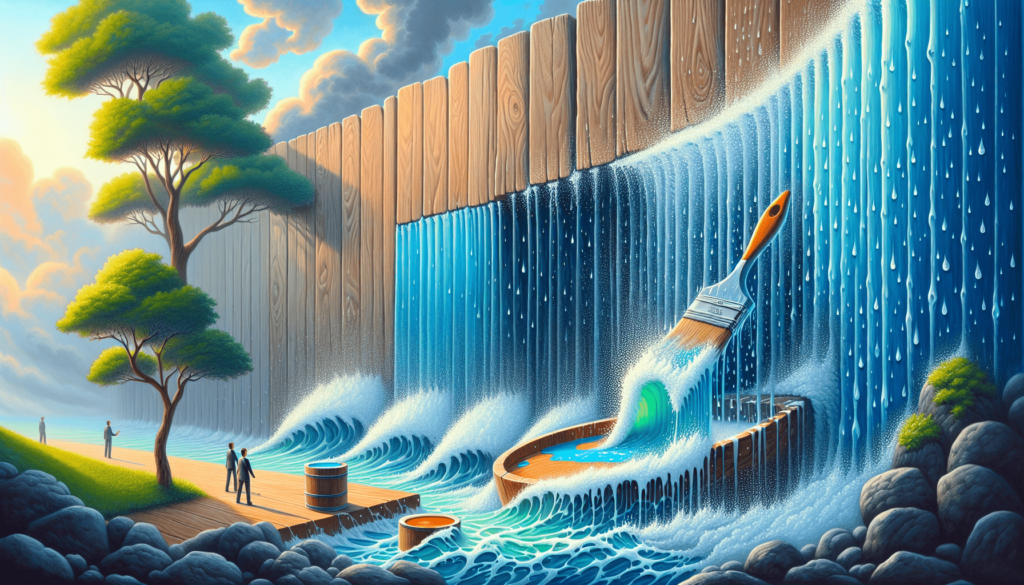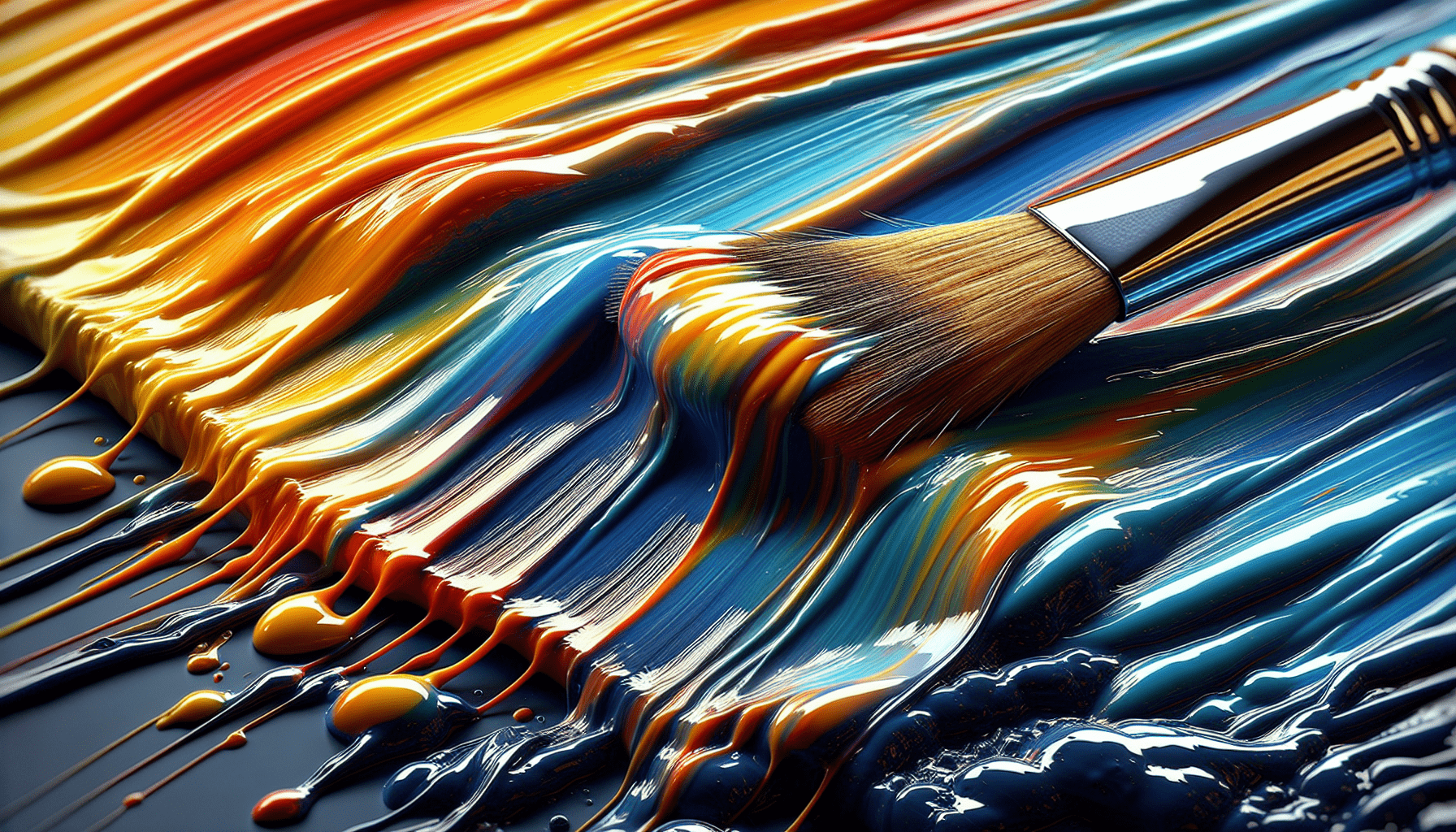In “Is Oil Based Paint Waterproof”, you are presented with a concise yet thorough exploration of the question in focus. Displaying a comprehensive understanding of paint composition and its practical implications, you embark on a journey discovering the intrinsic properties of oil based paints, their waterproof potential, and their implications in varied contexts. This article offers you a deep understanding of not only if oil-based paint is waterproof, but also the scientific basis behind its abilities and limitations. By the end, you will gain an in-depth knowledge of oil-based paints that greatly expands your comprehension and informs your application in personal or professional spaces.
Introduction
During any home renovation, painting is usually a central aspect. The type of paint you choose has a direct impact on the result and durability of your painting project. One of the key factors to consider when selecting paint is whether it will be exposed to moisture or water. So, the key question you may be asking yourself is, ‘Is oil-based paint waterproof?’ This comprehensive article aims to answer this question and explore the various facets of oil-based paint, including its composition, properties, common uses, and more.
Understanding Oil-Based Paint
Composition of oil-based paint
Oil-based paint is formulated from a variety of ingredients, mainly oil, solvents, and resin. Oil serves as the main vehicle, giving the paint its characteristic flow and consistency. Solvents, usually mineral spirits or turpentine, are included to maintain the paint’s workability until it’s applied and starts drying. Resins help to bind the pigment to the surface being painted, enhancing the durability and finish of the paint job.
Properties of oil-based paint
Oil-based paint possesses a range of properties that make it an optimal choice for certain painting projects. It has a slow drying time, which allows for a level of workability that is beneficial for complex projects that require careful precision. Another vital property is its ability to self-level and alleviate brush marks, leading to a smooth, glossy finish that is hard-wearing and long-lasting.
Common uses of oil-based paint
Because of its impressive durability, oil-based paint is commonly used on surfaces that are often subject to touch or use, like doorframes, window sills, and trims. It’s also great for kitchen and bathroom walls due to its resistance to moisture and humidity.

Waterproofing in Paint
Waterproofing agents in paint
Some paints are formulated with specific additives that enhance their water-resisting capabilities. These waterproofing agents can include waxes, silicones, and certain types of plasticizers, which provide a barrier between the painted surface and water.
Water repellency vs. water resistance
It’s essential to distinguish between water-repellent and water-resistant paints. Water repellent paints actively repel water, causing it to form beads which can then roll off the surface. Conversely, water-resistant paints are designed to resist the penetration of water to a certain degree but won’t actively repel it.
Factors affecting waterproofing properties
Several factors can affect a paint’s waterproofing properties. The type and quality of the ingredients, the surface preparation, and the application technique all contribute to how effectively the paint will resist moisture invasion.
Oil-Based Paint and Waterproofing
Waterproofing capabilities of oil-based paint
Oil-based paint inherently exhibits waterproofing capabilities because of its composition. The oil and resins create a surface barrier that can effectively resist water penetration. It also adheres securely to the surface, making it difficult for water to seep beneath the paint.
Durability in wet environments
Oil-based paint is well-known for its durability, making it a preferred choice for areas that may frequently come into contact with water, like kitchens and bathrooms. It can withstand repeated cleanings and the scuff of daily use without losing its sheen or color, maintaining its appearance for years.
Considerations for exterior applications
While oil-based paint fares well in wet environments, it may not be the ideal choice for all exterior applications. Constant exposure to harsh weather elements can lead to the paint losing its flexibility over time, which can result in cracking and peeling.

Advantages of Oil-Based Paint
Excellent adhesion
Oil-based paint is highly regarded for its excellent adhesion properties. This characteristic allows it to bond well with various surfaces, including wood and metal, providing a long-lasting finish.
Resistance to cracking and peeling
Generally, oil-based paint is more resistant to cracking and peeling than most water-based paints. Its flexible nature allows it to expand and contract along with the material it’s applied to without compromising the integrity of the paint film.
Long-term color retention
Oil-based paint offers superior color retention. It can maintain its vibrancy and appearance for years, even with regular cleaning or exposure to sunlight.
Versatility
Oil-based paint is also highly versatile, suitable for a wide variety of applications. It can be used on various surfaces and in a range of environments, making it a great choice for many painting projects.
Limitations of Oil-Based Paint
Drying time
While its slow drying time gives oil-based paint superior workability, it can also be a disadvantage when time is of the essence. It often necessitates a longer downtime for the painted area until it’s ready for use again.
Strong odor and fumes
Oil-based paint usually emits a strong smell, which can be overpowering in enclosed spaces without proper ventilation. Moreover, the volatile organic compounds (VOCs) in oil-based paint can pose health risks, underscoring the need for safety precautions during application.
Environmental concerns
The high levels of VOCs in oil-based paint also have environmental implications, contributing to air pollution. That’s why manufacturers and users alike are shifting towards lower-VOC or VOC-free paints.
Higher cost
Compared with other types of paints, oil-based paint tends to be more expensive. Nevertheless, the additional cost is often justified by the paint’s durability and superior finish.
Preparation and Application
Surface preparation
A crucial part of applying oil-based paint is thorough surface preparation. For best results, the surface should be clean, dry, and free of any loose or peeling paint. Sanding may also be necessary to ensure the paint adheres adequately.
Priming and sealing
Priming and sealing are essential steps to ensure your paint job lasts as long as possible. Always use a primer that pairs well with oil-based paint. Depending on the surface you are painting, a sealer may also be necessary to prevent stains or knots from showing through the paint.
Application techniques
Various application techniques can impact the final result. You can use brushes, rollers, or spray equipment, depending on the painted surface’s size and texture.
Proper ventilation and safety precautions
Proper ventilation is crucial when applying oil-based paint, both for your health and the proper drying of the paint. Always wear protective gear, including safety glasses, gloves, and a ventilator mask, to avoid inhaling the fumes.
Maintaining and Protecting Oil-Based Paint
Cleaning and maintenance
Regular cleaning can go a long way in prolonging the life of your oil-based paint job. You can use warm soapy water for general cleaning, but always test a small, inconspicuous area first to ensure it doesn’t harm the finish.
Avoiding moisture and water damage
Despite their water-resistant properties, oil-based paints aren’t immune to water damage. Avoiding direct, prolonged exposure to water can prevent issues such as bubbling, peeling, or possible mold growth.
Regular inspections and touch-ups
Performing regular inspections can help you catch any signs of wear and tear or moisture damage early. You may occasionally need to do some minor touch-ups to maintain the appearance and integrity of the paint job.
Protective coatings and sealants
To ensure ample protection and longevity, you may consider applying a protective coating or sealant after painting. These products can give the painted surface an additional layer of protection against the elements and enhance the paint’s sheen and durability.
Alternatives to Oil-Based Paint
Water-based paint
Also known as latex paint, water-based paint has taken over a significant share of the market because of its fast-drying capacity, low odor, and minimal VOCs. However, it may not match up to oil-based paint’s durability and finish quality.
Acrylic paint
Acrylic paint is versatile, easy to use, and comes in endless colors. It’s durable with good adhesion, but may lack the unique sheen and smooth, self-leveling finish offered by oil-based paints.
Latex paint
Latex paint is water-based and easy to apply, drying quickly and emitting less odor than oil-based paint. It’s also resistant to fading and chalking but is less durable than oil-based paint.
Conclusion
So, to answer the question, ‘Is oil-based paint waterproof?’ – it is undoubtedly water-resistant to a good degree due to its oil content and the protective barrier it forms on painted surfaces. However, continuous exposure to water or extremely moist conditions may damage it over time. Oil-based paint’s high durability, long-lasting finish, and superior adhesion make it an excellent choice for many applications, despite some limitations like slow drying time, strong odor, and environmental concerns. The key is to consider these factors, along with your specific needs and circumstances, before making a final decision.



